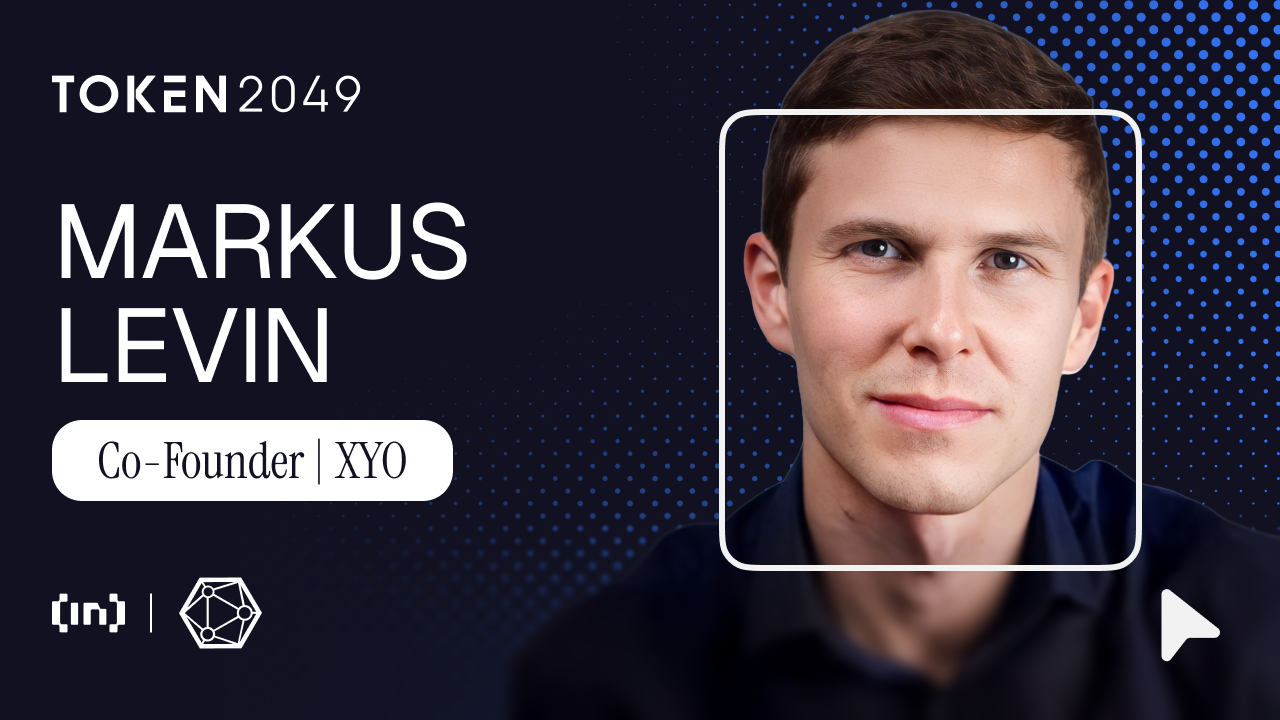The DePIN sector is emerging as the next frontier of blockchain technology, connecting physical infrastructure to digital networks. At Token2049 Singapore, BeInCrypto sat down with Marcus Levin, co-founder of XYO Network. His vision focuses on making real-world, verifiable data available for AI and Web 3 applications.
Chew It recently launched its XYO Layer One blockchain after seven years of operating as a decentralized data company. With over 10 million nodes spanning nearly every country, the network addresses location verification challenges, data validation bottlenecks, and prohibitive costs, among many other data processing issues inherent to blockchain holders. Levine’s ambitious goal: position XYO Layer One as the ultimate blockchain for AI-ready data infrastructure.
XYO recently launched the XYO Layer One blockchain. After seven years in business, what led you to build your first layer, and what are the key gaps in the current blockchain landscape that you address?
For years, XYO has operated as a data infrastructure company in the blockchain space. Our middleware technology connects the physical world to digital systems and other blockchains, providing verifiable data through innovations like Proof of Origin and Proof of Location.
But in all that time, no one had built a single layer that was truly data-centric. Each major blockchain has focused on transactions, moving tokens from one wallet to another, rather than building a foundation of validated real-world data.
With the advent of artificial intelligence, this gap has become more serious. Trusted data is now the most valuable resource, yet the infrastructure to verify and process it on-chain is still lacking. That’s why we built XYO Layer One from the ground up, a blockchain built specifically for data, powered by technologies we’ve developed over the past seven years.
With the introduction of a dual token model, one for governance and one for utility, how do you envision the balance of incentives between node operators, developers, and enterprise customers in your ecosystem?
We built our token model between the XYO token, which is over seven years old, and the newly released XL1 token in a way that they reinforce each other – we call them yin and yang. XYO is outside Layer 1. It is for DePIN, the ecosystem, for rewards and shareholder rewards, for Steing XYO Layer One for security and governance and so on. It is a governance network token and DePIN, and you can share it in XYO Layer One to earn XL1 tokens. The XL1 token is a gas and transaction token for decentralized applications within XYO Layer One, so it is always internal. You share XYO to get XL1. There’s already a small percentage of XYO owned out of the total supply, and we’re very excited about the growth we’re seeing there. This restricts the supply of XYO. Then on the XL1 side, we see tokens being burned as we have transactions on XYO Layer One because with every transaction gas fees are burned. So both symbols reinforce each other.
The AI, logistics and real-time data analysis industries have been highlighted as major beneficiaries of XYO technology. Can you share examples of recent industry pilot projects or partnerships that leverage XYO Layer One capabilities?
We recently announced our partnership with a company called Piggycell from South Korea. They have 98 percent of the mobile charging market and are a Web2 company moving to Web3. They have charging stations in bars, restaurants and stores. We are working on providing proof of location to their charging stations and to users of their devices, so you can prove they are where they are supposed to be, and the user did not run away with the charging cable. We also plan to encode the data generated there.
How does XYO’s approach to verifiable real-world data overcome the limitations and reliability concerns of central location solutions and other blockchain oracles?
Here’s an example from Pokémon Go. I made several calls to its manufacturer, Niantic, and the problem was that a group of kids were sitting in the basement of their house impersonating their location and pretending they were in the desert to get the rarest Pokemon. This ruins gameplay for fair players.
It’s just a game, but think about something of higher value like automated supply chains, smart cities, or self-driving cars. You want to make sure your site can’t be spoofed or hacked en masse, and that’s what we’re here for. We also do this with other DePIN numbers. For example, you can prove that the weather station you say is on your roof actually exists, and not somewhere else. For us, it’s all about collecting data and providing certainty about it so it can’t be spoofed or hacked. You can prove that the data came from a temperature sensor or a location sensor, for example.
XYO boasts over 10 million nodes globally. What are your current priorities for expanding developer engagement and stimulating long-term engagement in your ecosystem?
We have over 10 million nodes in almost every country. We looked at all those nodes and saw that we are also present in every African country. There are about half a million nodes in Africa now. DePIN changes the world. We are passionate about collecting data from underserved communities to prevent bias in AI.
For example, we have translated our website into several languages, one of which is Amharic, which is the primary language of Ethiopia, spoken by about 57 million people. ChatGPT made several translation errors, and we were curious to know why. This is because Ethiopia is not a priority country for ChatGPT, it is not where they make the most money. But we believe it is critical to collect data. You need to avoid bias in AI to truly make it the voice of humanity.
We have a new feature in the COIN app that allows you to share your coins – the points you earn using the app – for XL1. We have a campaign, people love it. When there are economic incentives, they get excited about them. The main bet is from XYO to XYO Layer One to win XL1. People see that they can participate in the COIN app. Then they realize they have XYO because they exchanged their COIN points for XYO. It’s to show what they have and teach them.
XYO was the original DePIN project and now sits at the intersection of DePIN, DeFi, and AI. What ambitious milestones or use cases are you aiming to achieve in the next year? How will these solidify XYO’s role as data infrastructure in the digital economy?
We want to be the blockchain for AI data. We are setting up our DePIN network and providing more features to enable this. Then, we bring our external partners on board with many companies in our XYO Layer One ecosystem because we can actually view our 10 million nodes and generate a lot of data. We will join the data world in the next revolution. This is our big mission. It’s an exciting time to be at DePIN. According to the World Economic Forum, the number of DePINs will grow from approximately 50 million to 3.5 trillion by 2028. This will be critical.
The way forward: building a data economy
Blockchain technology is evolving beyond finance. XYO’s layer-one infrastructure represents a strategic bet on verified data as the foundation of an AI-driven economy, deploying more than 10 million nodes globally. The DePIN sector is expected to reach $3.5 trillion in the next three years. The company has positioned itself at the intersection of three transformative technologies.
The challenge ahead is to turn this early mover advantage into sustainable developer adoption and enterprise partnerships. XYO’s seven-year journey has given it a head start in a race that has only just begun.




